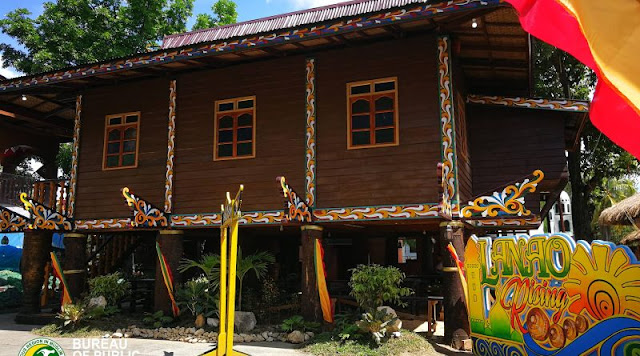Lanao del Sur’s village exhibit highlights ‘Lanao Rising’
MARAWI CITY, Lanao del Sur: At the heart of the Autonomous Region in Muslim Mindanao (ARMM) here is a microcosm of its five provinces. The exhibit, highlighting cultural villages representing Maguindanao, Lanao del Sur, Basilan, Sulu, and Tawi-Tawi, is part of the 29th anniversary of the regional government.
Dubbed Pakaradjaan 2018, it strengthens the ARMM’s advocacy to spread awareness on the rich historical legacy of the region, including diverse cultures that have been thriving even before the establishment of the Philippine Republic.
ARMM Regional Governor Mujiv Hataman views the cultural villages’ exhibit as vital since some policy makers do not have a deep understanding of the Moro history. To a certain extent, that leads to la ack of appreciation on where the proposed Bangsamoro Basic Law is coming from.
One of the highlights of the exhibit is that of the province of Lanao del Sur, home to Maranaos. Lanao’s village façade, decorated with colorful paintings of the Sarimanok – a mythical bird of the Maranao, is a sight one will surely not miss.
‘Lanao Rising’, the village’s slogan, traces its roots to a popular advocacy that conveys an important message: the province will rise from the catastrophe of the Marawi siege, said Lanao del Sur village chieftain Rasol Mitmug, Jr., also the secretary of the ARMM’s Department of Education.
Upon entering, the village reveals a replica of the Torogan, a traditional Maranao house that speaks of one’s status back in the early days. It is decorated with intricately carved panolong, a house ornament that resembles a butterfly wing, as well as other interesting Maranao creations.
A model of Plaza Cabili is the centerpiece in the village. The plaza, a historically significant part of Marawi, was destroyed in last year’s siege. The reason why it was included in the village exhibit is “to commemorate its memories of being a landmark and a venue for grand events in the past such as rallies, campaigns, and concerts,” said Sec. Mitmug.
The view from the window in the village structure is a miniature of the largest lake in Mindanao: Lake Lanao, which is connected to the Agus River system that provides up to a third of the island’s total power requirement.
To complete the experience in the exhibit, a functioning padian, or market, is built inside the village where visitors can find traditional Maranao delicacies, or buy souvenirs such as landap and wooden artifacts and brassware designed with okir. It should be noted that the Maranaos are known all over the country as excellent entrepreneurs.
“Naging opportunity din ang Lanao village para sa mga nagbebenta ng artifacts na gawa sa Lanao para makilala ang kanilang produkto,” said Sec. Mitmug. “Pinag-uusapan din dito kung paano mapre-preserve yung traditional performances, food, artisan skills, at sports,” he added. - Rocaya Sumndad Otical/BPI-ARMM




